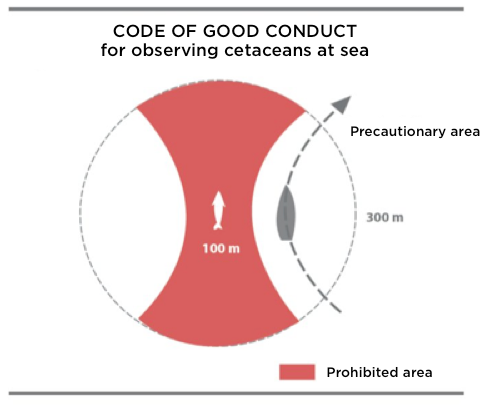June 10, 2020
News Sphyrna Odyssey mission
Listening to sperm whales
Following initial analyses of the acoustic data collected during the Sphyrna Odyssey 2019-2020, scientists from Toulon University deduce that Mediterranean sperm whales coordinate when they hunt with the clicks of their biosonar. Calculations carried out on tens of thousands of clicks show for the first time in the world that these super predators regularly coordinate during their probes, pointing their sonar emissions in the same direction.
Strength in numbers
Even though these sperm whales are 500 m apart, their actions are concerted and their movements are synchronous.
An individual which dive collects information about the bottom and the prey on it by the echo of the sound it emits. These same signals could be heard by the neighbours of his Alliance*, who are listening in the same direction. The partners also emit a sound, which gives additional information to what the first individual is hearing. It is a real-time exchange. It is also conceivable that they transmit signals to each other describing what they perceive. They could derive a benefit from this, in the quality of their perception of their environment: all the echoes of the sounds emitted by the members of the Alliance would go beyond each individual perception.
We can see, on the 3D representations developed by Pr. Hervé Glotin’s team, that following these Alliances, some sperm whales follow deeper trajectories towards -1700 m off the coast of Monaco. Then they sweep a large volume of water, and probably capture several squids.
* The Alliance is a cooperative bond that persists over time between the allies. It’s a pattern known among top predators such as lions and wolves. The most studied case of Alliance among cetaceans are pairs or triplets of bottlenose dolphins (Tursiops Truncatus) that cooperate for different tasks. An Alliance is often between individuals of the same family.
In the case of sperm whales, no hunting Alliance has ever been observed.
3D representation, axes in metres, of such a scene, recorded from the surface by the Sphyrna Odyssey mission in January 2020 off the coast of Monaco. The scrolling of time is multiplied by 10, each track is a probe of a sperm whale, from 30 to 50 minutes, which will then breath without clicking (no track) for 10 to 20 minutes, before diving back down.
Reducing the speed of ships in the Mediterranean
This discovery reinforces the recommendations of scientists who are warning of the importance of reducing the rate of noise pollution due to human activities. According to Hervé Glotin, Scientific Director of the Sphyrna Odyssey mission, a 15 to 20% reduction in the speed of ships in the Mediterranean Sea would significantly reduce the noise impact on cetaceans and could help their nutrition, and therefore their reproduction, and thus slow down their disappearance.

